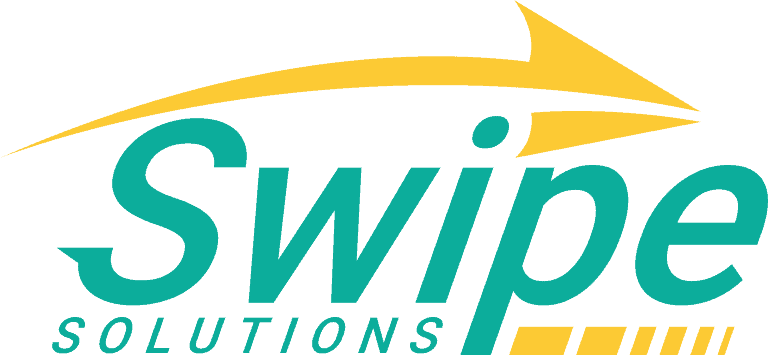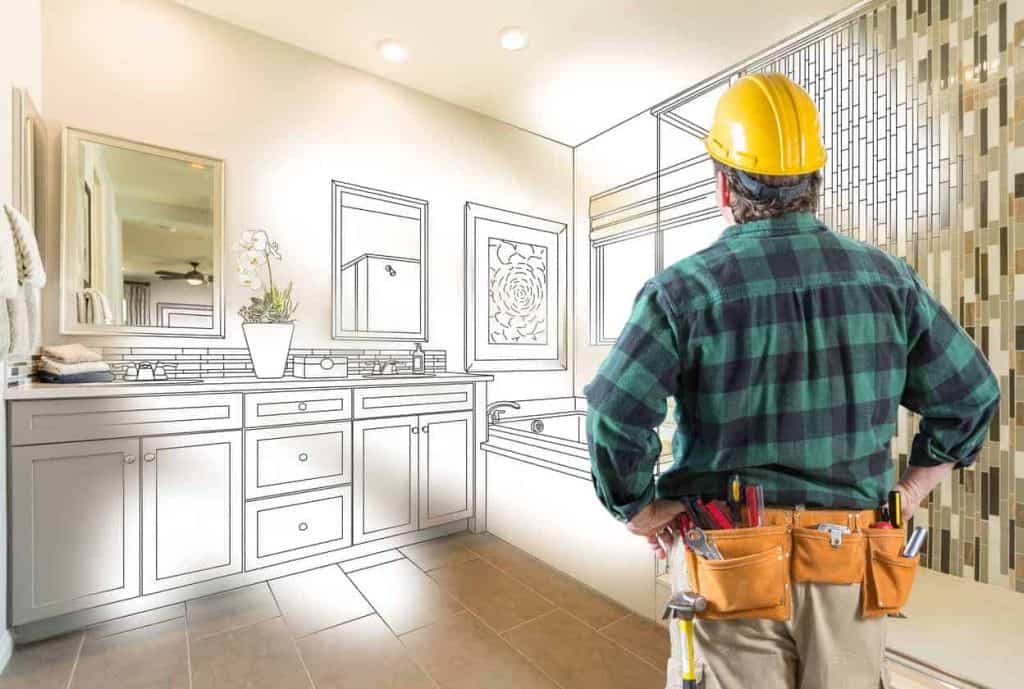Home Equity Loans vs Personal Loans for Home Improvement
When it comes to home improvement, personal loans are often the right choice
There are many great reasons to remodel your home. In addition to being able to enjoy the much-improved surroundings that a home-improvement project brings, well-chosen remodeling projects have the prospect of being excellent investments, with many home improvement projects netting up to triple-digit returns in some markets.
How you finance your home improvement project is critical

Creating a captivating and beautiful space where you and your family spend most of your time, while also enjoying the prospect of generating high monetary returns, can be one of the best investments you’ll ever make. But few people have the tens of thousands of dollars available on hand that most major remodeling projects require.
This means that most people who want to undertake major home-improvement projects will need to turn to some form of financing. Traditionally, the two major ways to finance home improvements have been through a home equity loan and a personal home improvement loan. People may also use home equity lines of credit, also known as HELOCs, as well as occasionally using credit cards or more obscure loan types, like cash-out refinancing. The differences between these methods of financing can be very important. As we’ll see, the commonly used home equity loan options often have major drawbacks when compared with a good credit personal loan. Understanding both the risks and benefits of each type of loan is critical in making the right decision as to which type of financing will be best for your specific home improvement needs.
The differences between personal loans, home-equity lines of credit and home-equity loans
I will argue here that, despite their lower interest rates, home improvement loans that rely on any form of home-equity financing are often considerably worse, particularly when all the risks are taken into account, than just taking out a personal loan from a bank or credit union. But first, it’s important to understand exactly what each type of loan is. It turns out that the type of loan that you choose can massively impact how your home renovation progresses or whether you are likely to even finish it.
Home-equity Lines of Credit
A home equity line of credit is a credit line extended by your bank that is based on the amount of equity that you currently have in your home. It is secured by your home’s value, meaning that the lender could potentially initiate a foreclosure on your home in the event of a default. Home-equity lines of credit differ significantly from other loan types in that their full amounts don’t ever have to be drawn. A home-equity line of credit can, therefore, be thought of as being like a credit card.
The maximum amount is akin to a credit limit, and you only use the amount of credit that you need. But unlike credit cards, banks that extend home-equity lines of credit often require minimum draw amounts. Home-equity lines of credit can have significantly lower interest rates than a home-equity loan due to the fact that borrowers only pay on what they actually draw. These credit lines can make sense for those who don’t know how much money they’ll need. If you may need a large sum of money but may also only need a small fraction of the total amount that is available, then a HELOC could make sense under some conditions. To determine the maximum home-equity credit line that a customer qualifies for, banks will usually calculate the home’s value and then multiply that number by around 75 percent, call this the maximum-lending ratio, to get the maximum possible loan amount. The maximum actual loan amount is calculated by multiplying the home’s total value by the maximum lending ratio and then subtracting the total outstanding mortgage on the home. This may sound confusing. So, let’s look at an example.
Take a home that is worth $200,000. Assuming that the bank uses a 75 percent ratio, the bank would multiply $200,000 by 75 percent, leaving a maximum possible home improvement loan amount of $150,000. If the homeowner owes $100,000 in principal on their mortgage, then the actual maximum home-equity loan that they will be extended is $150,000 minus $100,000, which equals $50,000. Note that the maximum-lending ratio is applied to the home’s value, not the homeowner’s equity. The homeowner above has $100,000 in equity. But the bank will not extend 75 percent of that number, which would be $75,000. They will only extend $50,000, which is 75 percent of the home’s value minus the outstanding mortgage amount. This is the standard means of determining the maximum loan for which a borrower is eligible. However, some financial institutions may use different formulae, possibly yielding higher loan amounts.
There are a number of potential drawbacks with this form of borrowing. Home-equity lines of credit typically feature variable interest rates. And banks often require homeowners to have at least a 20 percent current equity stake in their homes. Also, minimum home-equity credit line amounts may be anywhere from $10,000 to $25,000 dollars, with attendant minimum draw amounts that can be in the thousands. The interest rates that a borrower is required to pay are usually tied to the prime rate. But these rates can vary wildly. And a bank may jack rates through the roof if they feel that the lending risk has significantly increased, which may happen if real estate prices go on a downswing. Both home-equity lines of credit and home-equity loans typically only require borrowers to meet very loose credit-score qualifications, with a minimum score of 620 being common.
Home-equity Loans

Home-equity loans are similar to home-equity lines of credit in that they use the borrower’s home as collateral and, therefore, do not typically require the borrower to have excellent or even necessarily good credit. However, home-equity loans give the borrower a lump-sum payment, requiring them to pay interest on the full amount per an amortization schedule. These loans work much the same way as traditional mortgages, with the borrower making regular monthly payments and most of the interest being paid early in the loan period. Like home-equity lines of credit, home-equity loans are typically issued on a time frame of 10 to 20 years. But both shorter and longer loan periods are available.
Home-equity loans also differ from home-equity lines of credit in that they typically have fixed interest rates. Home-equity loans usually have lower interest rates than lines of credit. But the borrower usually ends up paying significantly more interest in absolute-dollar terms because they have higher average outstanding loan amounts. Like HELOCs, home-equity loans usually have minimum amounts in the $10,000 to $25,000 range, with most banks strongly preferring to issue larger-dollar-amount loans.
These loans have similar loan-to-value requirements, usually 15 to 20 percent minimum equity in the home. They also are typically issued only to those borrowers who have debt-to-income ratios of below 40 percent, with those who fall much lower on that spectrum receiving the most favorable interest rates. Home-equity loans are usually marketed to those who have large one-time expenses, the amount of which they know in advance.
Home-equity-based financial products can have serious downsides
Now that you know how home-equity financial products work, I’ll let you know a few things that banks won’t tell you about these products. I’ll then explain why using personal loans to complete a home renovation is often a far-superior option. One of the main marketing points for both home-equity loans and home-equity lines of credit is that they offer much lower interest rates than personal loans. This is generally true, but there are important exceptions. However, even when true, this is a very deceiving, apples-to-oranges comparison.
For those with halfway decent credit, there are many personal loans that can be found in the 10-percent-APR range. Unlike home-equity loans, which may rack up as much as $5,000 in closing costs on a $100,000 loan, personal loans often have little to no closing costs or hidden fees. On top of that, personal loans are usually issued for far shorter loan periods. Take an example of a personal loan that charges 10 percent interest over three years and a home-equity loan that charges 5 percent interest over 20 years. The total interest paid on a $30,000 principal for the 10-percent-APR personal loan will be about $4,800. For the same principal amount on a 20-year home-equity loan at 5 percent APR, the total interest paid will be around $17,500. Even this much lower interest rate still resulted in a massively higher expense for the home-equity loan due to the effects of compounding over a much-longer period of time.
Another major selling point used to market home-equity loans and lines of credit is the fact that the borrowers are held to very minimal or even nonexistent creditworthiness standards because the loans are usually fully collateralized by the home itself. While this would be a very good selling point at the absolute bottom end of the lending market, it ceases to make much sense at the level where those carrying out most high-end home renovations are operating. The fact is that the majority of people who might require $50,000 or $100,000 to complete a major home-renovation project are almost always in the upper echelons of creditworthiness. This not only means that they generally don’t have to worry about being denied big-money personal loans, but they also will be typically eligible for the lowest available personal-loan rates.
And at the highest creditworthiness levels, this means that even the nominal interest-rate advantage of home-equity loans and lines of credit start to disappear, with some of the most-competitive personal loans offering APR rates to the most-qualified borrowers that are as low as 4 percent. But so far, we’ve only looked at reasons that personal loans can be at least as good as home-equity loans and lines of credit. In the next section, we’ll examine a few situations where going with a home-equity loan or credit line over a personal loan can be a catastrophic mistake.
The Steep Risks of Using your Home as Collateral

Another big reason that borrowers prefer home-equity loans or credit lines is that, in the worst-case scenario where default occurs, the borrower is in effectively the same position that they would be in if they defaulted on their mortgage. Local banks generally do not like to foreclose on homes where a traditional mortgage is in default, preferring instead to work with the borrowers while trying to resolve the situation in any way that will avoid forcing the sale of the home.
On the other hand, when a default occurs on a personal or other unsecured loan, especially where amounts over $1,000 are concerned, an eventual lawsuit and judgement are all but certain. And this means that borrowers could face the prospect of having their bank accounts garnished, assets encumbered by liens, tax returns confiscated and a whole host of nasty and life-altering collection actions, including ruined credit and being forced into bankruptcy. Yet, it turns out that these two eventualities of defaulting are distinctions without difference. Because home-equity loans and lines of credit are subordinate to primary mortgages, creditors will often end up suing borrowers in court anyway when defaults occur.
But if there is enough equity in the home to cover both the outstanding mortgage and the home-equity loan or line of credit, many home-equity lenders will not hesitate to force the home into foreclosure. The bottom line is that a possible consequence of not being able to meet the payment schedule on your home-equity loan or line of credit is the physical loss of your entire home. This would be a catastrophic and sadly ironic outcome for someone whose original purpose of taking out the loan was to improve their home and enhance its value. And even where loss of your home doesn’t occur, it only means that a lawsuit and judgement, possibly for bankruptcy-inducing amounts, is all but guaranteed.
Home-equity lines of credit are risky business when it comes to bigtime renovations
If you’re just planning on changing your living room’s flooring or repainting a bedroom, you probably won’t have to worry about the realities of dealing with a general contractor or acting as one yourself. However, once you start getting into complex projects, such as a complete kitchen remodel or a total overhaul of a master bathroom, you will either be doing business with a general contractor or you will be serving as one. And this means that your renovation project won’t resemble a normal purchase of a good or service.
Instead, it will look more like the complex financing of a major real estate development, with large contracts that closely define specific drawdown schedules, deadlines, benchmarks, penalties and allowances. Such complexities can lead to big problems if you are relying on a home-equity line of credit. First, any negative fluctuation in your home’s market value may cause the bank to freeze your credit line. This is especially true for those who just barely qualified for their line of credit or who are making use of the maximum amount for which they qualified.
The second problem is that if you do not have a very large margin of error with respect to your estimated project cost, you may find yourself in deep trouble. For example, if you have a $50,000 line of credit or home-equity loan but the final project cost comes in at $70,000, a common occurrence that often isn’t known until close to the project’s completion, you may quickly find yourself in court as well as dealing with a permanent work stoppage. Even with professional contractors, cost overruns are a real risk.
But if you are effectively acting as your own general contractor or doing much of a project yourself, some cost overruns are more likely than not. Either one of these scenarios will leave you scrambling for cash and dealing with a very stressful situation that could result in lawsuits. Additionally, a half-completed renovation is generally far worse, in terms of your home’s value, than having never started at all.
Conclusion: For most newer homeowners, home-equity loans and lines of credit are a generally bad idea
The problems listed above, including renovations that are aborted before completion, work stoppages and contractors suing customers for non-payment, are all the result of not leaving enough of a margin of error for unforeseen cost overruns. Yet, low-error-margin situations are precisely the circumstances that almost all newer homeowners are likely to be in if they are using home-equity loans or lines of credit. Because amortization requires that mostly interest is paid in the first half of a loan’s life, newer homeowners may only barely have enough equity to get the estimated amount needed to complete their desired improvements. Many homeowner’s who seek out home-equity loans or lines of credit will be qualifying right near the bottom end of the bank’s lending range.
And this tempts homeowners to start projects where they will just barely eek out the estimated costs. When the completion of entire rooms and the payment of contractors are at stake, such hope-as-strategy finances are a recipe for disaster. On the other hand, most of the people who are looking to do high-end home-improvement projects would easily qualify for personal loans of $50,000 to $100,000, far more than enough to complete most home renovations. At the same time, the nominally higher interest rates of personal loans conceal the fact that the true cost of borrowing is often much lower due to the far-shorter loan periods of personal loans. Going with a good credit personal loan for your home renovation project isn’t guaranteed to be the best option.
And you should always research all available solutions, determining which are best for your specific circumstances. But for those who have been in their homes for less than 15 years and who are planning on starting complex home renovation projects, personal loans will very frequently be the superior choice.

